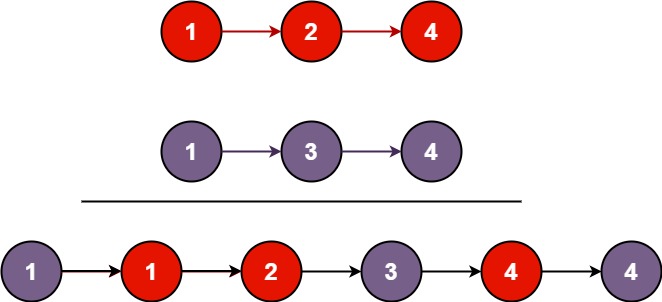Leetcode python 21. 合并两个有序链表 203. 移除链表元素
21. 合并两个有序链表
将两个升序链表合并为一个新的 升序 链表并返回。新链表是通过拼接给定的两个链表的所有节点组成的。

示例 1:
输入:l1 = [1,2,4], l2 = [1,3,4]
输出:[1,1,2,3,4,4]
示例 2:
输入:l1 = [], l2 = []
输出:[]
示例 3:
输入:l1 = [], l2 = [0]
输出:[0]
class Solution:
def mergeTwoLists(self, l1: ListNode, l2: ListNode) -> ListNode:
if l1 is None:
return l2
elif l2 is None:
return l1
elif l1.val < l2.val:
l1.next = self.mergeTwoLists(l1.next, l2)
return l1
else:
l2.next = self.mergeTwoLists(l1, l2.next)
return l2
执行用时:36 ms, 在所有 Python3 提交中击败了68.33%的用户
内存消耗:15 MB, 在所有 Python3 提交中击败了27.89%的用户
203. 移除链表元素
给你一个链表的头节点 head 和一个整数 val ,请你删除链表中所有满足 Node.val == val 的节点,并返回 新的头节点 。

示例 1: m
输入:head = [1,2,6,3,4,5,6], val = 6
输出:[1,2,3,4,5]
class Solution:
def removeElements(self, head: ListNode, val: int) -> ListNode:
if head is None:
return head
head.next = self.removeElements(head.next, val)
if head.val == val:
next_node = head.next
else:
next_node = head
return next_node
执行用时:64 ms, 在所有 Python3 提交中击败了44.91%的用户
内存消耗:26.2 MB, 在所有 Python3 提交中击败了5.10%的用户



